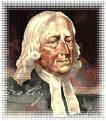
From my early choral youth, I sang tenor after my voice broke. Maybe this was because father, cousins and uncles all sang tenor, and there was an immense amount of pride in who could sing highest.
However as musical education and experience continued and increased, I was informed sagely by one of my uncles (who still sings in his 90’s!) that if I ever wanted to conduct or write music, then I had to be able to read and, if possible, sing, all the parts.
This did prove useful to me in my early composing days, in that I gained an appreciation about what is ‘singable’, and how boring it is to sing a part which is difficult or un-interesting.
When writing, I usually compose soprano and bass parts together, then fit in tenor notes, and finish with the poor old altos. Of course it’s not always like that, but there are always notes , or ‘jumps’ which you would prefer not to have to use but are needed for completeness.
But now that my voice is dropping into baritone and bass levels, I revel in the simplicity of finding (hopefully) the bass notes at any time. Anyone with an awareness of chordal structures can generally fall into this line very quickly, whereas the poor old tenors and altos have the constant struggle of keeping in touch with their notes.
So one great advantage of aging, for me, is that I can really enjoy my singing and still make it difficult for the inner lines in my compositions….sorry folks!



 Along with the Authorised parts of the Bible there is a group of books which did not have the full backing of the Canonical Committee who decided what should be ‘in’ and what should be left ‘out’. And so the the Apocrapha contains some of the ‘doubtful’ ones which still have something to offer.
Along with the Authorised parts of the Bible there is a group of books which did not have the full backing of the Canonical Committee who decided what should be ‘in’ and what should be left ‘out’. And so the the Apocrapha contains some of the ‘doubtful’ ones which still have something to offer. The music is extremely simple. Written in the key of C, with no incidentals it is easy to learn and memorise. It sounds a bit like a form of plainchant with many repeated notes. Also when sung it usually begins in unison and graduallybecomes more rich with other parts coming in. It was written by Elizabeth Poston, who only died in 1987.
The music is extremely simple. Written in the key of C, with no incidentals it is easy to learn and memorise. It sounds a bit like a form of plainchant with many repeated notes. Also when sung it usually begins in unison and graduallybecomes more rich with other parts coming in. It was written by Elizabeth Poston, who only died in 1987.





